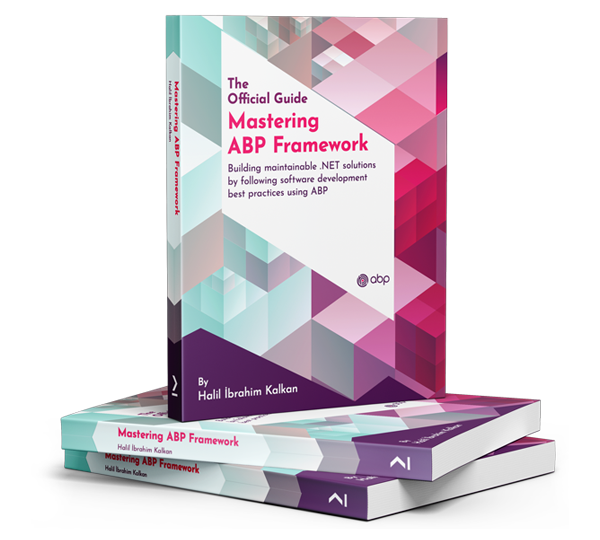This ticket (below) details how for Windows set up our environment for 0.9.8. Is there a script for mac? we converted the ps1 script to bash, but the url is pointing to windows and and another line pointing at an exe.
url="https://abp.io/api/abp-studio/download/r/windows/${output}" installdir_update="${installdir}/Update.exe"
https://abp.io/support/questions/8627/Install-specific-version-of-ABP-Studio
Trying to upload a file with some other input data. I can send just the file up as a single input using this as an input: IRemoteStreamContent Content. but i need to send some other parameters.
I got an error that it could not deserialize my input dto so i added this to my module. This gets me by the Deserialization error, but my input has no data
Configure<AbpAspNetCoreMvcOptions>(options =>
{
options.ConventionalControllers.FormBodyBindingIgnoredTypes.Add(typeof(PreviewFixedFileDto));
});
interface for data i want to send to the end point
public class PreviewFixedFileDto
{
public IRemoteStreamContent Content { get; set; }
public List<AssessmentFileColumnDto> Columns { get; set; }
}
public class FileColumnDto
{
public string ColumnName { get; set; }
public int From { get; set; }
public int To { get; set; }
}
Angular Code
previewFile(): void {
const formData = new FormData();
formData.append('source', this.file());
this.parentService
.fixedFilePreview({
content: formData as any,
columns: this.rows,
})
.subscribe(res => {
console.log(res);
});
}
Also tried this:
previewFile(): void {
const formData = new FormData();
formData.append('source', this.file());
this.service
.fixedFilePreview({
content: {
fileName: this.file().name,
contentType: this.file().type,
contentLength: this.file().size,
},
columns: this.rows,
})
.subscribe(res => {
console.log(res);
});
}
I need to access 3 entities that do not have a primary key. the access needed is read only. It looks like I can do it from reading the documentation, but I am having difficulties.
For these entities i just need to show them in a grid and do some paging, filtering and advanced finds. So all I need is GetListAsync
I have a left nav that shows the pages, looks screen shot 1. Then on the 'Data Transformation page there is an row action to show detail (screen shot 2) and i select that action. The left nav is no longer showing a selected menu item, even though the detail page is part of the route (yes the show detail page is not in the left nav).
Can I programmatically make the the left nav show like in screen shot 1? Data Transformation and Steps shown as selected? I tried using abp NavbarService and just expanding it by the below code. (Yes it only does part of what I want, but it doesn't work). Maybe i need to mark something dirty, call an update/refresh? Maybe this service is not designed to do this?
const item = this.navItems.find(item => item.text === 'Data Transformation');
item.expanded = true;
item.selected = true;
}
In a domain module and need to get user data and users for a role (data like phone number, email, name). I have tried to use IdentityUserManager/IdentityRoleMnager and IdentityUserRepository/IIdentityRoleRepository
i added a package ref to the project <PackageReference Include="Volo.Abp.Identity.Domain" Version="8.3.4" />
I tried adding various DependsOn to the Module. Building works ok, but i get a runtime of cannot resolve, one of the messages is shown below:
Which should we be using the Managers or the Repository? What is the DependsOn we should be using? I have googled and i have seen answers for using managers and repositories. None of them have worked for me
We are looking for a recommendation to how we can attach an id to each page. For pages we own we can add an id on to the abp-page like the id='main-content' shown below. Pages which are NOT under our control, we do not have a solution. The id will be the same for all pages, it is NOT dynamic. If you're wondering why we need this it is for 508 (accessibility)
We are looking for a recommendation.
Create a new solution abp new Acme.Bookstore -u angular -csf -cs "Server=localhost;Database=Bookstore;Trusted_Connection=True" run it open developer tools, console and see ng warnings. logon and see them just multiply
Under Administration | Organization Units have a existing Organization Add a couple of Root Units Delete 1 of those Root Units All of the Root Units added are deleted
We are not using MutliTenant. I can see the Root Units in the DB and they are all soft deleted the call to the backend shows just one guid
Request URL: https://localhost:44326/api/identity/organization-units?id=21b23e64-f077-728f-ef0e-3a169f4cf11b Request Method DELETE
Is this by design? If yes can we override this behavior?
Check the docs before asking a question: https://docs.abp.io/en/commercial/latest/ Check the samples to see the basic tasks: https://docs.abp.io/en/commercial/latest/samples/index The exact solution to your question may have been answered before, and please first use the search on the homepage. Provide us with the following info:
Watched YouTube video on ABP Commercial - CMS Kit Module (www.youtube.com/watch?v=bwrFCN-7WZU&t=18s). In the video a Page was created and then a Menu option was created to show the Page. Then the menu item showed in the Left Hand Nav. We have tried to do this, but something is not working. The solution is a Blazor Web App 8.2.0 out of the box.
Add Depends on to the module.
We just want to allow our customers to make content and have an easy way to display that content. If you want I can send you the code. Just tell me where I can send it

